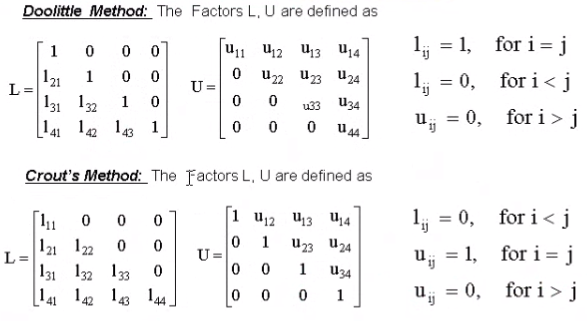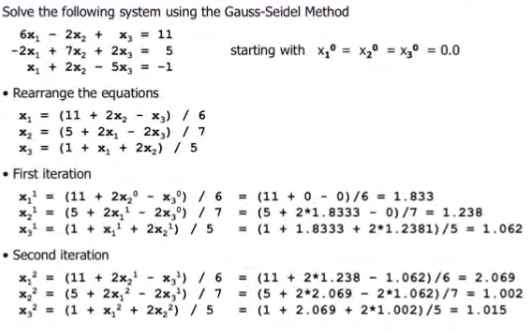Week 3#
Lecturer: G Venkiteswaran, Faculty for BITS Pilani
Date: 08/Aug/2021
Topics Covered#
- Gauss Elimination Analysis (cont.)
- Corollary
- Iterative methods
- Gauss Jacobi
- Gauss Seidel
Gauss Elimination Analysis (cont.)#
A time analysis of the algorithm for different size of inputs is shown below:
| Algorithm | n = 1000 | n = 10000 |
|---|---|---|
| Elimination | 0.7 s | 11 min |
| Back substitution | 0.001 s | 0.1 s |
Corollary#
Doolittle L
Crout Method U
Cholesky's Method \(U = L^T\) when A is symmetric and positive definite
- A is written as \(A = U^T U\). Hence we may have \(U^T Ux = b\)



Iterative methods#
Gauss Jacobi#
- Computations for each element can be done in parallel since each step independent
- Convergence is generally faster than Jacobi method
Gauss Seidel#
- The gauss seidel method can be applied to any matrix with non zero elements on diagonal, but convergence is not guaranteed
- Computations for each element cannot be done in parallel since each step depends on the previous calculation
- Convergence is generally faster than Jacobi method

